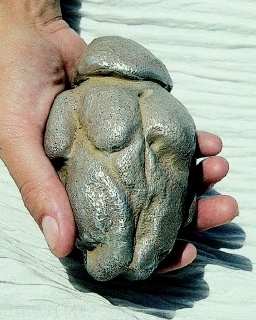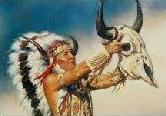In this post, we will discuss the approach in the Qur'an of the history of religion and the place of beliefs over time as it is presented. The Qur'an presents religiosity as a primary nature, innate and designs rites religion as a system evolves over time and space.
B. Belief a Human Nature:
B-1. First Religious Nature:
فأقم وجهك للدين حنيفا فطرة الله التي فطر الناس عليها لا تبديل لخلق الله
(Cor. 30:30)
"Hold your face to the religion of the Gentiles, whom God has provided natural men. Point of alteration in the work of God."
"Hold your face to the religion of the Gentiles, whom God has provided natural men. Point of alteration in the work of God."
The Qur'an presents in this verse the man as a being naturally inclined to belief, seemingly obvious intuition that seems acquired rebuttable way: his brain works by combining ideas and spontaneous events, pushing indeed systematically develop belief systems. Is less easily acceptable: paradoxically, models and scientific theories themselves are not immune to this neuro-cognitive mechanism. Now it is impossible for man to detach most of any system of more or less verifiable or refutable beliefs, even with a strict application of its share. And this by the structure and functioning of the brain. The brain is composed of one hundred billion neurons having to co-ordinate to result in the emergence of an illusion of being a homogeneous entity. Such a process requires a perpetual interpretation of signals from each of the billions of neurons to adapt an intelligible meaning; process that will extend the same principle to the perception of the outside world, and sentencing him to perpetually interpret everything that comes to his senses.
B-2.Souris in Cage: Thought Experiment.
Let's make a thought experiment. Imagine a mouse in a glass cage, where a wheel is placed, and a mechanism that dropped a seed when the wheel is driven in a specific direction by the mouse. The mouse wheel-turning and seeing fall the seed. For her, it is the fact of the wheel actioner that produces the seed. It ignores the mechanism designed unwittingly: the only thing she knows is the fall of the seed due to its action on the wheel. Similarly, a completely wild man like the Paleolithic should design a wind that pushes or pushes a tree as an entity, and to fear him just as a tiger for example.

B-3. Vital Energy, Natural Powers and Spirits:
Homo sapiens would have appeared there around 150,000 years. The Palaeolithic, he had to consider the spontaneous forces of nature as entities, just like an animal, the sun strikes or thunder, and probably than in many older men. He had no scientific concept and had to have a very spontaneous and intuitive worldview. A very interesting track of such beliefs is manifestly through funeral rituals: burial of the dead with weapons or utensils for eating. It follows from this practice that they believed that the dead sleep and may wake up. See the dream must have seemed so real to them that they should not doubt that the souls of the dead existed in another world. Similarly, in the unanimous opinion of anthropologists, the time of those first men, everyday common objects always had a practical function, as purely aesthetic notion will prove relatively late. However, a pendant of Venus dated to 250,000 years old was found in Berakhat Ram, reflecting the transport of a female statuette: probably in the hope of being protected from the forces of nature and perhaps encourage abundance or gift of life in the clan: a precursor of the concept of time before god.

Pendant Venus, dating back over 150,000 years reflecting the oldest evidence of the veneration of a primitive protective mother.
B-4. Emergence of a form of proto-religion:
It appears that a proto-religion emerged naturally, seeking to protect themselves from the forces of nature, promote food resources. The discovery of magical objects like stones resembling humans or animals used in more or less conscious or spontaneous rituals reflects such developments. We mentioned above alterations on the Venus of Berekhat Ram. Let's also mention of Venus Tan Tan and Hohle Fles. Not to mention the rock python Botswana before which archaeological excavations have uncovered pieces of ocher colored arrows and burned, showing traces of proto-religious rituals.


Venus Tan Tan Tan, 300000-500000 ansans and Venus of Hohle Fels 35000-40000 BC.

A photo of the python cave (Botswana). Archaeologists have found there traces of a cult dedicated to the Python back to between 70,000 and 80,000 years ago.
Emmanuel Anati, argues in The religion of origin [1], which parétal art would be a testimony of proto-religious or mythological concerns. According to the archaeologist, prehistoric people would turn to supernatural powers figured by animals, invisible spirits also suggested in the theory of shamanism expensive parietal André Glory and Jean Clottes.
 .
. 
To the left representation of a man-lion (32.ooo years), right representation of a man-bizon (12,000 to 17,000 years, France).


On the left, Nergal God Mesopotamian lion, right Horus, the Egyptian god eagle.
C. I have perfected for you your Religion In Day:
اليوم أكملت لكم دينكم وأتممت عليكم نعمتي ورضيت لكم الإسلام دينا
(Cor. 5: 3)
"Today I have perfected for you your religion and completed My grace for you: I have approved for you Islam as your religion."
"Today I have perfected for you your religion and completed My grace for you: I have approved for you Islam as your religion."
C-1. The Development of the Concept of God:
Talking about monotheism for the Paleolithic no sense, because even the word god exists in any sense yet. The vocabulary probably very poor (think of the number of words in the current archaic tribes) and writing of absence does not allow the development of a sophisticated theosophy. The veneration of the Venus of Berekhat Ram is the oldest trace of a very simplistic worship of a protective mother of the fertility of the clan. But without doubt, the forces of nature are considered entities as well as animals, sun, lightning ... It appears that the venus Berekhat Ram had to protect the clan of the hostile forces of Nature.


A shaman making a parable, and a sacred pipe that was used to send a universal cult of creepy beings on earth, winged beings of heaven and humans to Wakan Tanka, the twelfth heaven. Another form of monotheism Columbian Sioux Indians.
C-2. First Tracks of Religiosity:
Animism and Shamanism are forms probably more archaic human religiosity. The rocks have spirits, the mountains too, the concept of God is not always present or often remains vague in the current natural religions worldwide.
C-3. Concept of polytheism and monotheism of Birth:
قل سيروا في الأرض فانظروا كيف كان عاقبة
الذين من قبل كان أكثرهم مشركين (Cor 30:42).
"Say: browsing the Earth, and see what was the end of those before you, most were polytheist."
الذين من قبل كان أكثرهم مشركين (Cor 30:42).
"Say: browsing the Earth, and see what was the end of those before you, most were polytheist."
Polytheism appears relatively late in history with rites and cults to entities more marked, while their population climbs slowly. The Venus who were to represent the mother goddess acting as a transmission medium of worship from one generation to another has gradually evolved into same-worshiping statues becoming either incantatory objects but the object of the cult , whereas with the venus Berakhat Ram looks like it was a kind of magic instrument to protect the clan. So slowly idol statues appear témoigant an archaic form of polytheism, with aparition from the settlement of religious monuments increasingly prodigious.
The traces of polytheism in turn gradually evolve into what we call of monotheism, will abandonées idols and deities in Hinduism considered as so many manifestations of the same divine essence in struggle in itself to establish the cosmic balance and ethics. There will despite the notion of polytheism or a démiruge in all civilizations. A measure of the evolution of language, and the capacity for abstraction and with the invention of writing, monotheism in the modern sense finally appear parallel to the structuring of the mental world of men. In Ancient Egypt, each deity worshiped represent a single deity, and henotheism be an archaic form of monotheism early.
With the advent of writing, more sophisticated religions. Above, a board of the Book of the Dead of Ani and the Torah roll ...
C-4. Abraham and The Creator God Enlil, Lord of the Intended:
فجعلهم جذاذا إلا كبيرا لهم لعلهم إليه يرجعون
(Cor. 9:58 p.m.)
"He put them in pieces, except [the statue] greatest. Maybe they return to it."
(Cor. 6: 76-79): "When the night covered him, he saw a star (Venus), and said!" This is my Lord 'But when it set, he said: "I do not like not those that set "Then when. he saw the moon rising, he said:" This is my Lord! "But when it set, he said:" Unless my Lord guide me, I shall certainly the number Perplexed people. "When he saw the sun rising, he said:" This is my Lord! This one is bigger "Then when the sun set, he said:" O my people, I am all that you associate with God. I turned my face towards Him Who created the heavens and the earth; and I am not of those who ascribe partners to Him. "

Above, a representation of Enlil, king of the celestial gods. According to the Qur'an, it seems that Abraham would have left around the lord of the gods by destroying the idols of the other cities worshiped in the temple.
We argued in the presentation of our minimalist thesis about Abraham, the Abrahamic monotheism was born very gradually, giving primacy to Enlil, the ultimate Master of Destiny emerges at a time when Nergal, Infernal Demon Destroyer, where chaos reigns leaving them helpless-local gods, and at a critical time when the predictable and cyclical side of the stars worshiped as presiding over the destiny of the men discovered with the invention of writing. This proto-monotheism progressing to monolatry and beaming at the option of expanding the descendants of the patriarch where his descendants lived.
C-5. The Apogee of Monotheism:
The prophets of Israel will somehow kind of very influential shaman, making oracles prophesying with an intensity more impressive in a contest of socio-political circumstances very tormented. Thus, in the archaic Judaism starts, YHV be considered an own divinity to the chosen people, which forbid them to worship foreign gods. But it will be a long time called Abba (father) and children men, a trace of archaism of language resulting difficulty in determining the more abstract idea of god.
Monotheism and evolve gradually, as the semantic-cognitive perfectionement of humanity, toward a concept of uniqueness increasingly marked and characteristic. Judaism progress towards monotheism increasingly pushed. But not so in Islam, where even the symbolic use of the concept of God's children will eventually be abandoned. Muhammad will then be inspired: ". Today I have perfected for you your religion and completed My favor upon you I have approved Islam as a religion for you ..." (Cor.5,3).
---------------------------------
[1] Emmanuel Anati, Religion origins, Hachette, 2004 178 p. (2012792340 ISBN)


Aucun commentaire:
Enregistrer un commentaire